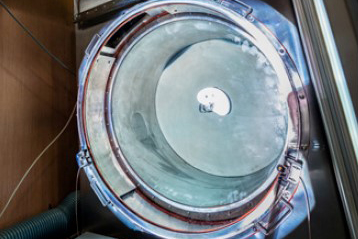APL envisioned, built, and successfully demonstrated NASA’s Double Asteroid Redirection Test (DART), the world’s first planetary defense technology demonstration, which proved the capability of a kinetic impactor to deflect an asteroid. This revolutionary low-cost spacecraft used APL-developed and modified air and missile defense algorithms to autonomously target and intercept an asteroid almost 7 million miles from Earth, changing its orbit period by 32 minutes, and providing humanity with a proven solution for planetary defense.




















